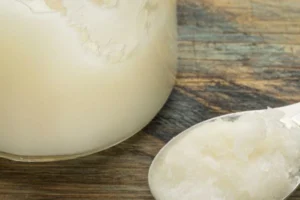Few know that there is a World War connection to Hindustan Unilever’s (HUL’s) popular Kwality Wall’s ice-cream brand. In 1913, a food entrepreneur Thomas Wall from London decided to produce hand-made ice-cream to lift sales during the summer season when appetite for his popular sausages would wane. While the idea took off in the initial years, it wasn’t until 1922, after World War I, that the Wall’s ice-cream brand, best known by its red-and-white heart logo, came alive under new owner Unilever. The firm deployed large machines to produce, store and sell the ice-cream at scale.
Fast-forward to the 1940s. In India, entrepreneurs PL Lamba and Iqbal Ghai in Delhi were surprised with the response of American soldiers, stationed in the city during World War II, to their hand-made ice-cream brand Kwality. Taste apart, the Americans would recall the quirky brand name, dropping in frequently at the Kwality store at Regal Building, New Delhi, for a scoop of their favourite ice-cream. After World War II, Lamba and Ghai put Kwality into commercial production, importing freezers and ice-cream-making machines for the purpose. Kwality soon emerged as a popular brand across the country, stealing HUL’s heart, which acquired the brand in the mid-1990s.
Today, Kwality, which was merged with Unilever’s Wall’s brand after acquisition, is up for review along with Cornetto and Magnum, as part of a global mandate. Whether HUL decides to sell or retain the portfolio will be decided in the next few months as the internal assessment progresses, but some experts believe the decision will be a tough one, given HUL’s legacy in ice-creams and the inflection point at which the market is at the moment.
“Ice-creams is very impulse-driven. Today you have quick-commerce apart from traditional and modern trade which is driving the market. I see a lot of disruption happening in the domestic ice-cream market, with new-age brands driving innovation. Many of them are available online. At a broader level, ice-creams are no longer about sales and distribution alone, but also about R&D and what innovation a player brings to the table,” says Anand Ramanathan, partner and leader, consumer products and retail sector, South Asia, Deloitte.
For HUL, these are pertinent questions to answer as it takes a long, hard look at the market and its prospects within the category, which is estimated at `24,000 crore in total size, growing at 15-20% per annum. The organised segment is around 65% of the total market, straddling national, regional, international and local brands.
Kwality Wall’s, along with Magnum, which was launched in India in 2013, and Cornetto, which is a popular range of ice-cream cones under the Kwality Wall’s umbrella, turn in sales of around 1,800 crore annually for HUL. This is 3% of the company’s nearly60,000-crore turnover. HUL’s ice-cream business ranks second to market leader Amul, which does sales of `2,500 crore per annum, according to industry executives and experts.
Kwality Wall’s and Cornetto are estimated to drive almost 85-90% of the `1,800-crore business, say industry sources, while the balance comes from Magnum. The three brands are available in nearly 0.5 million general trade outlets or 25% of the total 2 million outlets that retail ice-creams in India. Amul is available in 50% or 1 million outlets and Vadilal retails in about 10% or 0.2 million outlets, say experts.
Cold war: Frozen dessert v/s ice-cream
While HUL forayed into ice-creams three decades ago through acquisitions, picking up as many as six brands including Kwality from local players, but retaining only the latter, industry experts say that it was constrained by its absence in the dairy supply chain. So, the company used vegetable oils as opposed to milk when making its products, which meant they were called frozen desserts and not ice-creams, as Amul has emphasised repeatedly in its advertising over the years. HUL and Amul have sparred over the issue, dragging each other to court and releasing full-page ads to counter each other in their battle for leadership of the `15,000-crore organised ice-cream market. Volume-wise, Amul is estimated to have a share of 35% within ice-creams, while HUL has 15% share and Vadilal has 12% share, say experts.
“Consumers in India prefer milk-based ice-creams and the dairy co-operatives have had a clear advantage here, since they have the dairy backend and milk supply chain infrastructure to support them. Co-operatives also have a strong local distribution network, which gives them an edge over players that don’t have a dairy backbone,” says N Chandramouli, chief executive officer of Mumbai-based TRA Research, a brand insights and advisory firm.
Industry sources say that in the initial days of its ice-cream foray in India, HUL had to contend with epithets such as “Dalda ka ice-cream” for its portfolio as it struggled to resolve taste and flavour issues associated with frozen desserts versus milk-based ice-creams. Over the years, that debate, says Chandramouli, has receded as consumers have increasingly grown aware of what frozen desserts are versus ice-creams.
HUL also innovated with new product formats such as softy cones, a sundae range and feast range among others early on in the product and business lifecycle, launched ice-cream parlours under the Swirls brand in key cities, with as many as 150-200 parlours dotting the landscape (around 10-12 years ago), as the company sought to improve its out-of-home presence for ice-creams (the retail operation has been folded up in recent years as Covid-19 and high costs caused disruption). HUL also tied-up with players such as Voltas for its cooling solutions in a bid to expand its ice-cream reach beyond metros and big cities. It also rolled out aggressive advertising and marketing campaigns over the years to fight Amul and other majors for the consumer’s mindspace, complementing the effort with a push into retail shops.
In recent years, HUL has aggressively tapped the quick-commerce channel to improve ice-cream sales, now deriving over 10% of its business from this channel, according to analysts tracking the company. Growing heat waves will mean that ice-cream players have a big role to play during summers, which gives them over 75-80% of their business. This summer alone, HUL along with most other ice-cream brands registered year-on-year growth rates of over 30% as consumers flocked to shops and ice-cream parlours or ordered their favourite brand online to beat the heat.
“Growth rates apart, the big shift within ice-creams is happening at the hyper-local level. City-specific brands, who are going direct-to-consumer are taking away share from the big boys,” says R S Sodhi, president of the Indian Dairy Association and former MD of Gujarat Co-operative Milk Marketing Federation (GCMMF), which makes the Amul brand of dairy and ice-cream products.
While rural areas demand a deeper presence of national ice-cream players, urban areas, Sodhi says, is where much of the action is centred today, since the market is evolving quickly. But it remains fragmented.
“There is a long tail of brands because the nature of the market is such. You have ice-cream makers in every part of the country, big and small. And they will have their band of loyal followers,” Sodhi reasons.
HUL may have to weigh in all these factors as it takes a call on the future of its ice-cream business in the country.





